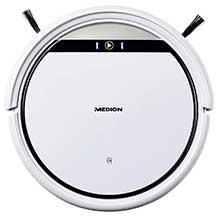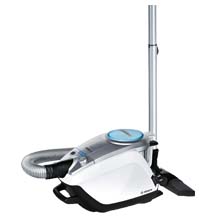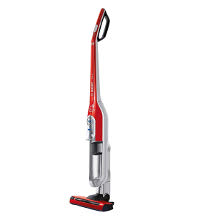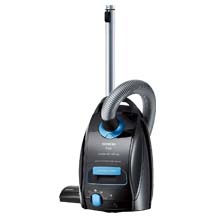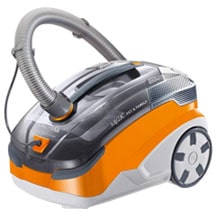Handheld vacuum cleaner purchasing advice: how to choose the right product
- The most important facts in brief
- Hand-held hoovers are intended for short-term use. A maximum usage time of about 10 minutes at standard power is normal.
- Many models work with bagless cyclone suction technology. This means there are no follow-up costs and the suction power remains constant even when the dust container is full.
- Hand-held hoovers with rechargeable batteries are worthwhile with additional features such as display of charge status and usage time as well as auto-charge stop. This protects the battery and saves electricity.
- Important purchase criteria for handheld hoovers are suction technology (with or without bag), suction power, energy source (rechargeable battery or mains), usage time and charging time.
The hand hoover – A mini hoover
The living room looks wonderfully tidy, but you can still spot a few crumbs on the carpet! Do you have to get the big hoover out of the storeroom? It would be much more practical if you had a small hand hoover at hand.
The practical household helper is quickly at hand and ready for use and can be used in many ways. Whether it’s cake crumbs on the kitchen table, coffee on the keyboard, pet hair on the car seat or dirt in joints and wood cracks – the small hoover quickly makes these mishaps a thing of the past.
The compact design is typical for the handheld hoover. The motor, dust collection bag (if available) or dirt collection container, filter and suction tube are built into a single unit that the user can comfortably hold in one hand. The unit is usually no bigger than a shoebox. It therefore does not take up much space when stowed away.
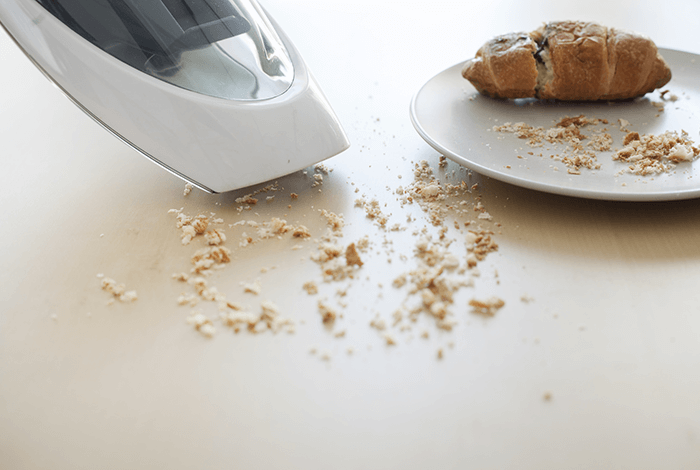
Pro points
- Compact design
- Handy and light
- Ideal for removing light soiling (e.g. crumbs)
- Space-saving
- Flexible to use
Drawbacks
- Only 10 to 20 minutes running time (battery)
- Small dust container
- Lower suction power
Hand hoover versus upright hoover
You can’t say one appliance is better than the other. Of course, a conventional hoover is just as suitable for removing small debris such as crumbs, pet hair and dust as the handheld hoover. However, because the upright hoover is comparatively large, it seems cumbersome in many situations to first fetch the appliance and get it ready for use. A hand-held hoover offers more convenience in this situation because of its compact design. Which device is “the better” also depends on the use and the situation. The following overview compares the different purposes and suitability of both types of device:
| Criteria | Hand-held hoover | Conventional floor vacuum cleaner |
|---|---|---|
| Intended use | Removing small amounts of dirt | Cleaning a room or a flat |
| Duration of use | Short duration of use | Longer duration of use |
| Pets | No pet or one pet lives in the household | Several pets live in the household |
| Transport | Easy due to small size | Cumbersome |
| Frequency of use | Rarely | Regularly |
Hand hoover as a second device
The mobile hand-held hoover cannot replace a classic hoover. Even in a small flat with only one carpet, the mini hoover would reach its limits, because cleaning larger surfaces is not one of its strengths. The suction power of the mobile hoover is not sufficient for thorough cleaning of a deep-pile carpet. Instead, the hand-held hoover is an ideal secondary device that is used when only a small amount of dirt needs to be removed quickly. The user does not need to get out the big hoover. In the following chapter, we will show you what advantages a hand-held hoover can offer as a second appliance.
What types of hand-held hoovers are there?
If you take a look around the range of hand-held hoovers, you will see that there is quite a variety of devices on offer. There are models with a cord, with a rechargeable battery, with or without a dust bag, devices with a suction hose and 2-in-1 devices.
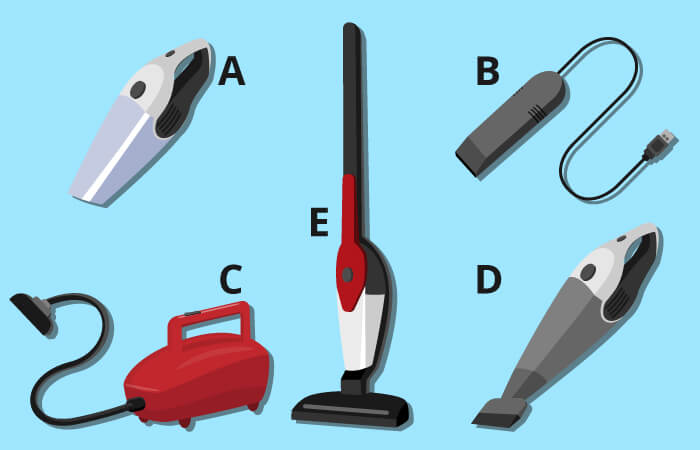
Which hand-held hoover model is best depends on the intended use. We present a few device types with their advantages and disadvantages:
Classic hand-held vacuum cleaner
The classic hand-held hoover consists of a compact housing containing the motor, fan, dust container and filter. These models do not have a suction hose. The dust is sucked directly into the wide nozzle. The user holds the whole appliance comfortably by the handle.
Modern hand-held hoovers are usually battery-operated. This means that there is no power cable, but a charging cable is of course always included in the delivery. Hand-held hoovers in this form are intended for short use. They are ideal for quickly vacuuming crumbs from the kitchen table or small amounts of dust. This is why this type of hoover is also known as a cordless hoover, hand-held cordless hoover or table hoover.
Simple devices are available for around 15 euros. If you want more comfort and a higher-quality finish, you have to dig a little deeper into your pocket and spend about 50 to 60 euros for the small hoover.
Pro points
- Small and light
- Quickly ready for use
- Space-saving
- Unlimited radius of action thanks to battery operation
- Good value for money
Drawbacks
- Unsuitable for longer use
Hoover with suction hose
Hand-held hoovers with a “suction trunk” are not quite as common in the range. With a power consumption of 700 to 800 watts, they have considerably more power than the simple table hoover. The capacity is also much higher, at around 5 litres. This makes the handheld hoovers with suction hose suitable for longer use. You can also use it to clean a small room. This makes them ideal as equipment for cars or mobile homes. The Stormy model from efbe-Schott also has a blow-out function. This turns the hoover into an air pump that can be used to quickly inflate an air mattress.
Accessories usually include a carrying strap and several brush attachments. A strap is very useful because of the relatively heavy weight (about 1.5 kilograms). A permanent filter keeps dust away from the motor. A dust bag is often not necessary. The user only cleans the collection container and the filter.
The cost of such a hoover is around 20 to 30 euros.
Pro points
- Many accessories
- Quickly to hand
- Handy small
- Bagless
- Perfect for car, motorhome and garden
Drawbacks
- Mains operation
- Relatively heavy
Mini Hand Vacuum Cleaner (USB Vacuum Cleaner)
The desk is the ideal place for the minis among the handheld hoovers. The mini hoovers draw their energy from the integrated USB connection. This already suggests that this is a cleaning device for PCs, laptops and electronic accessories. Minis with a brush nozzle also clean sewing machines or desk drawers. The suction power of the small devices is relatively weak. This makes them more of a “nice gadget” than a high-quality household appliance.
To give the mini hoovers on the desk a little more charm, manufacturers have “packaged” the useful devices in imaginative shapes. So you will find USB hoovers that look like a ladybird, an owl or an elephant. In terms of price, these types of hoovers are around 10 euros.
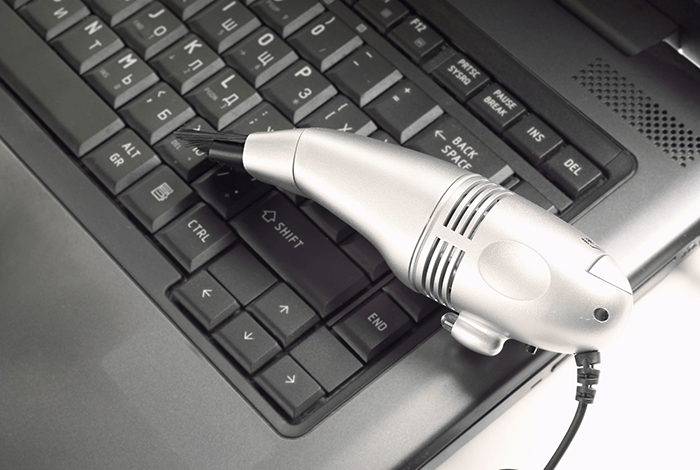
Pro points
- Light weight
- Practical for the office
- Wide choice of designs
- USB power supply
Drawbacks
- Weak suction power
- Low battery capacity
Wet-and-dry hand-held hoover
Some of the practical household helpers are not only capable of removing dirt and dust. They also suck up liquids without any problems. This makes them ideal for the kitchen and dining room. If a glass of water or milk is accidentally tipped over, or if damp potting soil lands next to the flower pot, the mini hoover is quickly at hand to clean up the mishap. Those who value such a function are more likely to find one among the handheld hoovers than among the conventional cordless hoovers. Wet-and-dry models are available from brands such as Severin, Holife, AEG and Philips. When comparing handheld hoovers, it is worth taking a look at the specification of the appliance’s capacity. The usual distribution is 500 to 600 millilitres (ml) for dry dirt and about 100 ml for liquids. Wet-and-dry handheld hoovers cost about 50 euros.
Pro points
- Versatile use
- Quickly to hand
- Handy small
- Perfect for household and car
Drawbacks
- Limited battery life
- Frequent emptying of the tank necessary
2-in-1 appliances
For small flats and single households, 2-in-1 hoovers are a recommendation. These are handheld hoovers to which the user can add (extendable) suction tubes. This turns the small handheld hoover into a stick hoover in a few easy steps, with which the user can clean the floor or even ceiling corners. Some models, such as the AEG Ergorapido CX7, have a hand vacuum unit integrated into a stick hoover. Thanks to various brush attachments, it becomes a hoover for hard-to-reach corners of stairs or for the table. Interested users have to reckon with costs of around 200 euros.
Pro points
- Versatile use
- Practical
- Suitable for cleaning larger areas
Drawbacks
- Low suction power compared to floor hoovers
Note: Many shop operators also assign upright hoovers, stick hoovers or upright hoovers to the category “upright hoovers”. This is because the 2-in-1 devices presented above are also included.
What to look for when buying a hand hoover
The range of handheld hoovers is vast, from low to high (three-digit) price segments. This makes it difficult to adequately compare different products. As a guide for consumers, we have summarised in the following section the most important criteria that play a role in deciding on a suitable upright hoover. On the one hand, it is about the technical features that a recommendable device should have. On the other hand, it is worth taking a look at extra functions that are not a must, but make operation more convenient.
Power supply: Cable or rechargeable battery?
Most hand-held hoovers are battery-operated. They are quickly ready for use, even if there is no power socket nearby. There is, of course, no cord to restrict freedom of movement. In terms of price, handheld hoovers with rechargeable batteries range from about 25 to 400 euros.
Tip
If you are looking for a hand-held hoover with a rechargeable battery, make sure it has a lithium-ion battery built in. This type of battery is characterised by a long service life. This means that the battery power remains constant even after being recharged several times.
Hand-held hoovers with a power cord are less common on the market. With a price of around 30 to 100 euros, they are often much cheaper than the devices with battery operation. Of course, the cord restricts freedom of movement. On the other hand, these hoovers work with more power (about 700 to 800 watts) because they are powered by electricity. This and the compact design ensure powerful suction. If a power socket is available, corded handheld hoovers can be used for an unlimited period of time. Cordless hoovers, on the other hand, run out of steam after a short time.
Battery life
The small table hoovers want to return to the charging station after about 10 to 20 minutes. According to the manufacturer, some models last up to 45 minutes before they need new energy. However, consumers should pay close attention to the small print when looking at these promising-sounding figures, because this usage time also depends on the suction power setting. The vacuum cleaner therefore only achieves such a long battery life when it works on the lowest setting. At the highest suction power, the appliance only lasts a few minutes. For a new appliance, a service life of at least 10 minutes at standard power is perfectly acceptable.
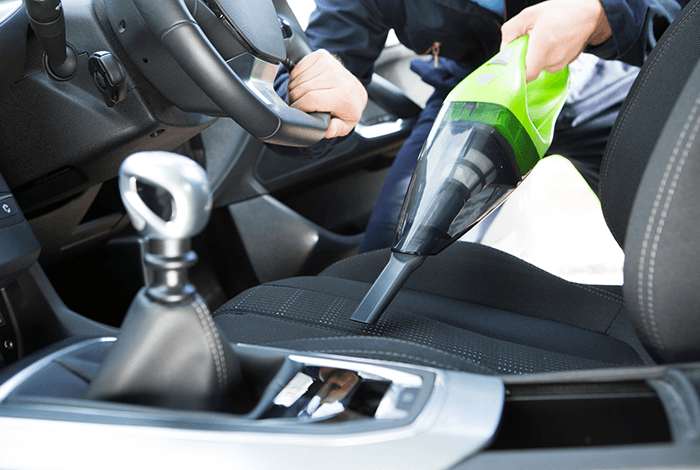
The charging time for the hoover batteries is three to five hours. Depending on the model, charging is done via an included charging cable or, as with devices from Bosch and Philips, via a charging station. As far as ease of use is concerned, a charging cable is definitely an advantage. When the battery is empty, the user can charge the battery and use the device at the same time. Of course, only within the range of movement that the charging cable allows. Some manufacturers, for example Severin, also include a 12-volt cable in the package. This allows the user to charge the hoover conveniently via the cigarette lighter in the car.
Suction power
The suction power of most vacuum cleaners can be regulated. At least two suction levels should be available.
A high power consumption of the motor, which is stated in watts in the product description (see also below under “Power”), is only an indication that the suction power of the hand-held hoover is also high. With battery-operated hand hoovers, the power consumption is in any case significantly lower than with devices with a power connection due to the energy source. Consumers should therefore not only rely on a high wattage, but also pay attention to the workmanship of the hand hoover.
For example, the design of the hoover determines how well it sucks in dirt.
The following applies: the shorter the path, the greater the suction power. Since the suction nozzle of compact handheld hoovers is relatively short anyway, the suction power of these types of hoovers is generally relatively high. A longer telescopic nozzle can reduce the suction power considerably.
Suction technology
There are two methods of collecting dust in handheld hoovers:
- In a dust bag
- In a dirt collection container
Most devices on the market work with bagless technology (cyclone technology). One advantage of this suction technology, in which air is sucked in and swirled according to the centrifugal principle, is the constant suction power. Even if the dirt collection container is already full, the unit continues to suck with undiminished power. So-called HEPA filters also ensure that the outgoing air is dust-free. These types of hoovers are therefore recommended for people who suffer from dust mite allergies.
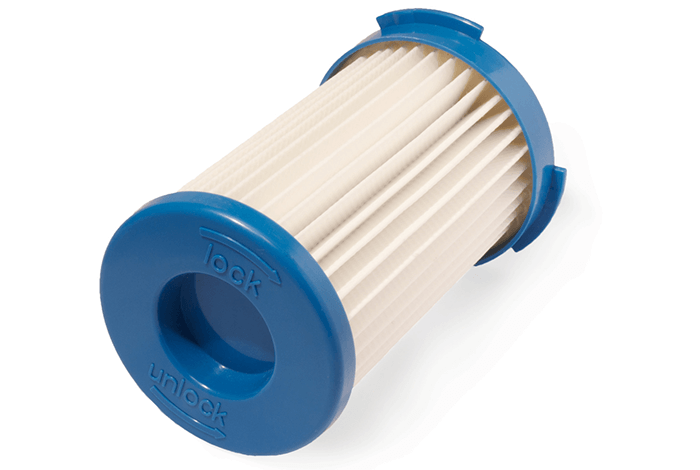
Since no bag needs to be replaced, there are no follow-up costs in this respect. In addition, no unpleasant odours spread because the user usually empties the container immediately after use.
In the chapter on how a hand-held hoover works, you can find out more about cyclone vacuum technology.
Weight and size
A hand-held hoover should be as light as possible. After all, the user holds the entire weight of the appliance, i.e. motor and dust container, in one hand. Most appliances weigh between 800 and 1,200 grams. With this weight, vacuuming is easy and does not turn into a dumbbell workout.
In terms of size, these types of hoovers are very space-saving with their compact design. They can easily be stored in the utility room or sometimes even in a cupboard drawer.
Dust container and container volume
Due to its small size, the dust container of a hand-held hoover is naturally much smaller than that of a conventional floor hoover. In a device that does not need a dust bag, the dirt container is about 200 to 500 millilitres (ml). This is roughly equivalent to a small water bottle. If the small hoover is only used occasionally, a container volume of 200 to 300 ml is sufficient. If you are going to use the hand hoover more often, it is better to go for a model with a larger dirt container, i.e. 500 ml or more.
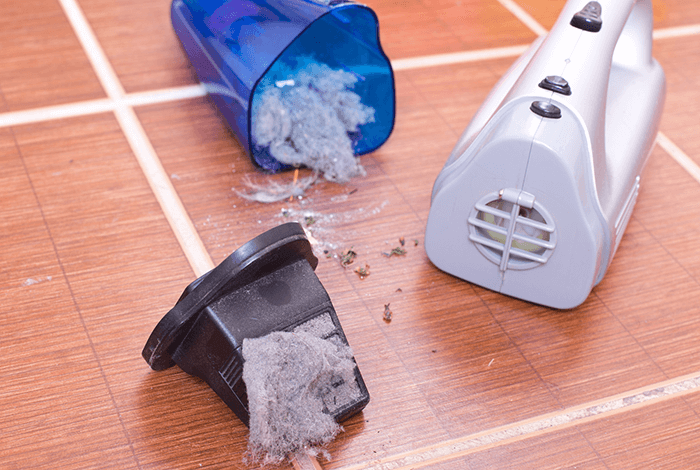
Volume
Although the small hoovers are usually only used for a short time, it is of course pleasant if the appliance makes as little noise as possible. With a noise level of between 80 and 85 decibels (dB), such a dwarf hoover is as loud as a main road or the noise of a car travelling at about 50 kilometres per hour at a distance of one metre. There are also models with a volume level between 40 and 70 dB. This is roughly equivalent to a washing machine. These devices are very quiet in comparison.
The best way for consumers to find out whether the volume of the hand-held hoover is within a tolerable range is to test the device they want in practice.
Power
Power is a typical indicator that many consumers look for when buying an electric appliance. The more watts an appliance has to offer, the better its performance – this is the common belief. The wattage indicates the maximum amount of electricity the appliance requires at the highest level. The higher the wattage, the higher the energy consumption.
A high wattage value does not automatically indicate a better suction performance of the upright hoover. Many other factors, such as construction or motor design, lead to good or less good suction power. So high performance is not everything. Because most appliances are powered by a rechargeable battery, the power (i.e. the maximum energy consumption) of handheld hoovers is comparatively low at around 100 watts.
Tip
Consumers should not be put off by high performance figures, but should also consider other criteria such as design and suction technology when comparing the best hand-held hoovers.
Additional features and equipment for upright vacuum cleaners
If the basic functions of the hand-held hoover are right, it is also worth taking a look at the various extras and accessories that the manufacturer supplies with the appliance. The following extra features offer purpose-designed added value and really benefit the ease of use in daily use.
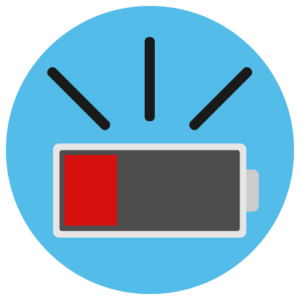
Charge indicator
A charge level indicator is helpful for handheld hoovers that are operated with a rechargeable battery. The user can read the current charge level of the battery from the charge bar. Ideally, he can also see in the display how long he can continue vacuuming with the available energy. When charging the appliance, the control display shows whether the battery is fully charged. The user can then disconnect the appliance from the mains in good time. This is especially important if the hand hoover does not have an auto-charge stop. This function stops the charging process automatically as soon as the battery is charged. This protects the battery and helps to save electricity.

Wall mount
When it comes to where the new hand hoover will find its place in the household, a wall mount is a useful option. This way, the handy little hoover is tidied away when not in use and is not lying around on the floor or table. Many manufacturers combine the wall mount with a charging station. This is practical because the household appliance then charges automatically when not in use and is ready with a full battery charge for the next vacuuming action. However, if this is the only charging option, the ease of use suffers. The user cannot charge and use the hoover at the same time because the appliance is parked in the wall bracket.

Container emptying at the touch of a button
If you are interested in a hand-held hoover without a dust bag, you should also pay attention to how the dirt container can be emptied and cleaned. This is primarily a matter of hygiene. Ideally, the user should not come into contact with the dust and dirt. Dyson has developed a practical technology here: The user only operates a lever. This opens the bottom of the container and the dirt falls into the bin. With many hoovers, the bin can be quickly and easily removed from the appliance at the touch of a button.

UV-C light (against mites)
People who suffer from dust mite allergies need to look out for various allergy-friendly features when buying a new hand hoover. These include UV-C light, for example. This feature is mainly found in hand-held hoovers that are used as mattress vacuums, such as the models from CLEANmaxx and Hoover. UV-C light is an electromagnetic radiation that is also part of sunlight. This type of UV radiation is already used in other areas for disinfection, for example in medicine. According to the manufacturer, cleaning mattresses with UV light kills about 99.9 percent of germs, bacteria and mites. For humans, the radiation is harmless as long as it does not get into the eyes. For this reason, the UV light in these devices only switches on when the brush nozzle is resting on the mattress or upholstery, just to be on the safe side.
Various nozzle attachments also extend the range of functions of the hand hoover. This additional equipment distinguishes many devices from one another even more clearly.
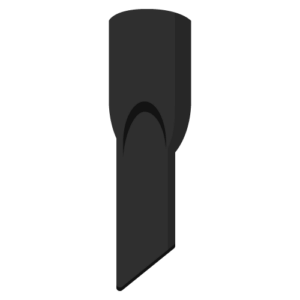
crevice nozzle
The slim crevice nozzle with the flattened tip is ideal for cleaning edges, corners and joints. It is often part of the standard equipment of conventional hoovers. Hand-held hoovers are often equipped with this feature, sometimes in different sizes. Nevertheless, additional nozzles are not a matter of course for small hoovers. Those who value this extra part should pay attention to the scope of delivery when buying. But there are also solutions for the indecisive. Manufacturers such as Miele or Bosch offer suitable accessory sets.
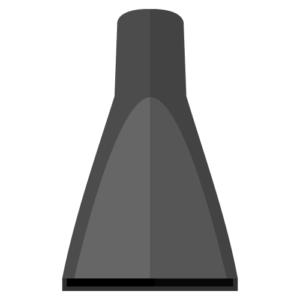
Upholstery nozzle
The wide upholstery nozzle is equipped with short, soft bristles, the so-called thread lifters. These brush threads, lint, hair and crumbs out of the textiles when vacuuming. As the name suggests, this type of nozzle is intended for textile surfaces, for example upholstered furniture, mattresses or car seats. Again, unlike with upright hoovers, this additional part is not always included with a hand-held hoover.
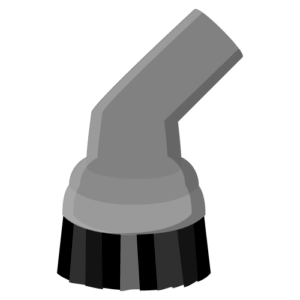
Suction brush
The small brush-shaped nozzle is often part of the equipment of a hand hoover. Thanks to the soft bristles, the hoover attachment cleans twisted and narrow spaces. The suction brush is therefore well suited for removing dust from furniture such as lampshades, bookshelves, keyboards, window sills and skirting boards.
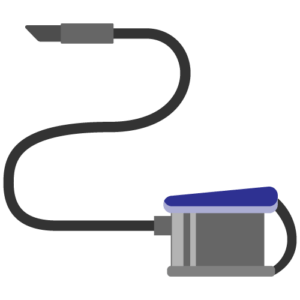
Suction hose
With a flexible suction hose, you can reach hard-to-reach places when vacuuming. The hose is compatible with several nozzles. In combination with a crevice nozzle, the user can, for example, also vacuum picture frames or clean the spaces behind the cupboard or the car seat.
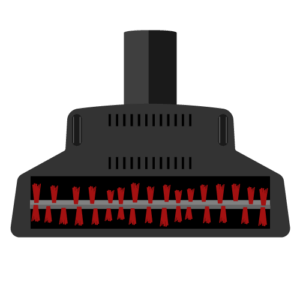
Brush attachments against animal hair
Pet owners know how stubbornly the fur traces of their four-legged pet stick to armchairs, couches and on the carpet. A hand-held hoover with a special nozzle for removing pet hair is ideal for quick cleaning in between. Attachments with rotating brush rollers such as a turbo brush attachment or an electric brush are suitable for this.
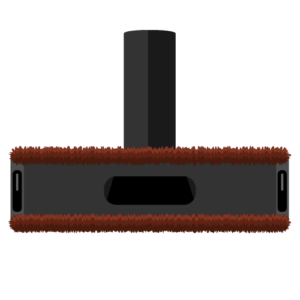
Parquet nozzle for hard floors
This hoover nozzle for smooth, hard floor surfaces such as parquet, tiles or natural stone has a wide shape. It is also flat and often equipped with a ball joint. This makes it possible to clean floor surfaces under cupboards or beds. These nozzles are often equipped with a rim of short bristles. They clean smooth floors well, but are unsuitable for carpets. If you want to clean both hard floors and carpets with your hand-held hoover, it is best to use a combination nozzle. This type of nozzle is equipped with retractable brush bars. Of course, the addition is only worthwhile for powerful handheld hoovers.
How a hand-held hoover works – The cyclone vacuum technology
There are two methods of bagless technology: single cyclone and multi-cyclone.
The single-cyclone vacuum technology
The principle of the single-cyclone hand hoover is quite simple: the motor of the hoover creates a vacuum, which sucks the air into the interior of the appliance. It flows into a cone-shaped container. This technique creates a vortex of air (cyclone). The centrifugal force created ensures that dirt and dust particles are flung to the edge. They then fall into the collection container. The air stream escapes upwards. Before the air flows out of the hoover again, it passes through a central paper filter that catches the finer dust particles. The user should clean this filter from time to time.
Coarse dirt particles and hair are perfectly removed by hoovers with single-cyclone technology. To remove the smallest dust particles from the air sucked in, a hoover with multi-cyclone principle is better suited.
Multicyclone hand-held hoover
This system also works on the centrifugal principle. As the name suggests, there are several cyclones here that clean dirt and dust from the air that is sucked in. Even fine dust particles end up in the dust container. This method is recommended for allergy sufferers and also worth the investment.

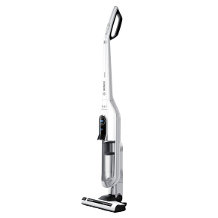
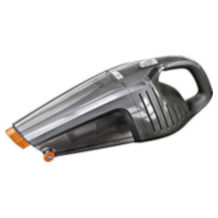
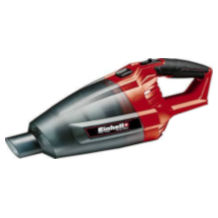
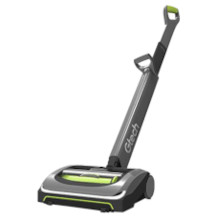
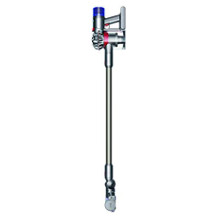
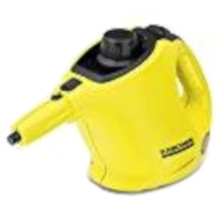




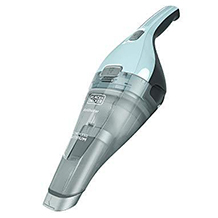



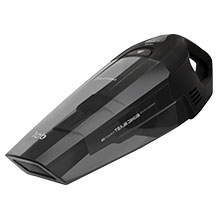


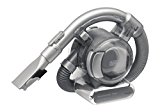




 1,012 reviews
1,012 reviews








